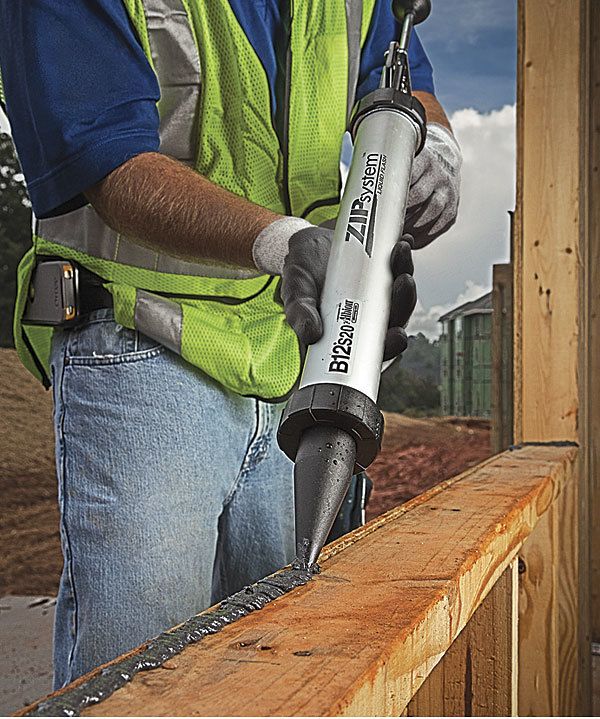Huber Liquid Flashing
This Huber seam- and penetration-sealing liquid flashing is used for sealing difficult joints, penetrations, and openings

Huber has recently released a seam- and penetration-sealing liquid flashing to complement its ZIP System acrylic flashing tape. The new product, which is sold in both 20-oz. sausage tubes or 29-oz. caulking tubes, sells for about the same as a roll of ZIP System tape, but the linear footage of coverage is about 50% less. Although the liquid flashing is a warranted substitute for the tape and can be used in all the same ways, ZIP System general manager Charlie Robinson says that it’s really intended to be an ace up the sleeve for sealing difficult joints, penetrations, and openings. “Instead of trying to origami-tape around a pipe, for instance, builders can apply a bead of liquid flashing and not only save time in labor, but feel more confident with the results,” he explains. The liquid flashing also makes quick work of waterproofing and air-sealing large openings such as sill pans for doors and windows.
The flashing is laid down in thick beads, then troweled smooth. The ideal finished thickness is 12 mils, which is almost identical to the thickness of ZIP System tape, but Robinson says a good rule of thumb is to apply the flashing thick enough so that you can’t see the wood underneath it. The flashing will be tacky in 20 to 40 minutes and cured in about four hours, depending on thickness. The recommended working temperature is between 35°F and 100°F, a guideline that Robinson says is more focused on ease of application than on bonding performance. Whereas ZIP System flashing tape tends not to stick well to wet surfaces, the liquid flashing isn’t affected by water. In fact, misting the surface of the liquid flashing after it has been applied will help it to cure more quickly.
Robinson says that the liquid flashing, just like the ZIP System tape, is compatible with plywood and OSB sheathings but that Huber can’t back the product’s 30-year warranty unless it’s used with ZIP System sheathing.

























Comments are closed.